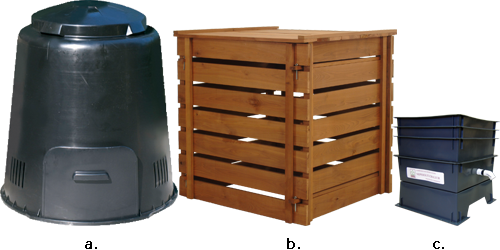 |
||||||||||||||||||||||||||||||
 |
|
 |
|
 |
|
 |
|
 |
|
 |
|
|||||||||||||||||||
|
COMPOSTING & RECYCLING
Composting uses nature's own recycling system. Weeds and leaves, grass clippings, vegetable peels, and various other organic wastes are turned into humus. That's an essential soil conditioner richer than anything we can buy. Why throw away the raw material which generates something so valuable? Especially when composting has other benefits as well.
Composting has three basic requirements: air, water, and food. Air: Air penetrates only the first few inches of the pile, so it needs help to reach the centre. A vile smell around the compost tells you that anaerobic bacteria are moving in, and the pile may simply need to breathe. The most effective method of introducing air is to turn the pile with a garden fork.
Water:Your compost pile should be as damp as a wrung-out sponge -- moist to the touch -- but no water should come out when you squeeze a handful.
Food: The ingredients are all around us -- almost anything that once lived is a candidate for the compost, so try for lots of variety to get a good mix of textures and plant nutrients.
Brown: Materials that are high in carbon are called "brown" ingredients.
Green: Materials like garden refuse, manure, tea and coffee grounds, feathers, hair, and food scraps are high in nitrogen, or "green."
For successful results, you can use the simple rule that compost needs to be about half "brown" and half "green" by weight. Composting soon becomes a matter of instinct, like the cook who bakes without a recipe. If the pile doesn't heat up, you know there's not enough "green" in the mix, while a smell of ammonia means it needs more "brown."
Materials To Use
Green
Brown
This list is far from complete. Anything organic can, in theory, be composted -- some more easily than others. But common sense suggests a few exceptions. The following materials may cause problems in a backyard compost pile.
Materials To Avoid
|



